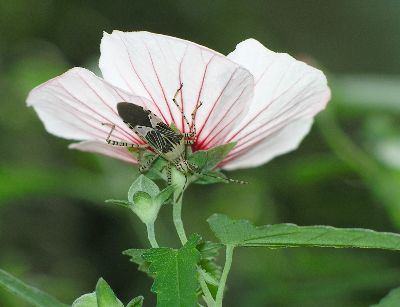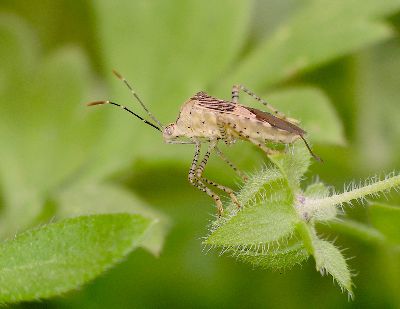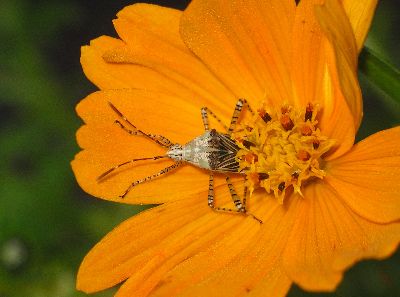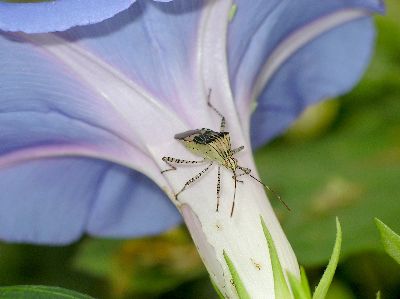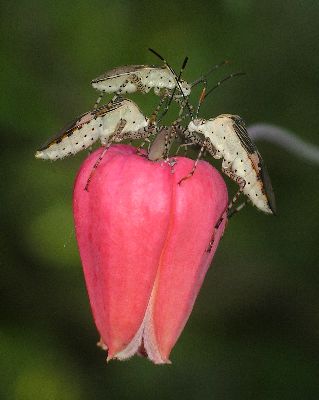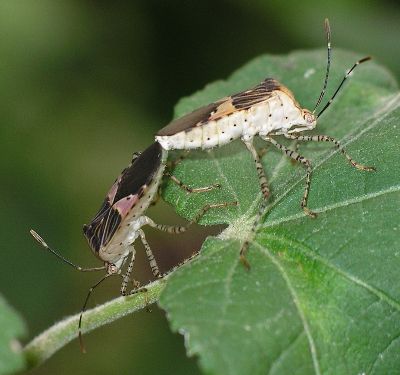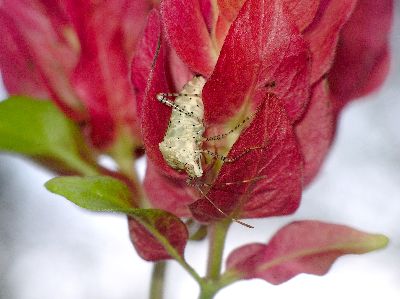The images presented in these galleries are reductions of photos taken by Valerie with a Pentax Optio 450 digital camera. The compression has been increased to 80% (100%=no compression) and the dimensions reduced in order to save bandwidth and facilitate page loading. The information below each image gives the size in pixels and kilobytes of the original file as well as the title by which to request the larger version. All of the original files are in jpeg format, most at about 95% compression, and are suitable for printing, desktop wallpaper, or detailed study. While the images here are free for the taking (right click - save as; do not link to these images directly), the larger versions are also available by sending a request to Valerie via . The frames around the gallery photos are not part of the same file and are only for presentation on this site.
Although the photos are free to use, they are copyrighted by LARVALBUG and remain the property of the owners of this site. We request that any public use of these images be accompanied by a credit to LARVALBUG.COM and, when appropriate, a link to our site (<a href="http://www.larvalbug.com/">LARVALBUG</a>). Commercial use of the large files can be arranged for a modest fee.
To request larger files or ask any questions please send an e-mail to Valerie at .
|
|
Coreid Bug (Hypselonotus punctiventris). This is one of my favorite insect subjects. Although the coreid bug shown here is frequently encountered around Austin, it seems to have no common name, hence the generic taxonomic term. All the photos on this page are of adults. Juveniles, also called nymphs, are shown on another page for this species. An article on this coreid bug in our newsletter archives provides more information on this insect.
Coreid bug on Mexican honeysuckle (Justicia spicigera). These insects feed on plant juices, and seem to have a wide variety of species that suit their needs.
Coreid bug on Spearleaf swampmallow (Pavonia hastata) bud. The swamp mallow, also called pink pavonia, is a hardy and invasive plant, but a number of insect species seem to love it.
Coreid bug on Spearleaf swampmallow blossom. In spite of the feeding of numerous species of herbivorous bugs, these flowers rarely show any damage at all.
Coreid bug on Baby blue-eyes (Nemophila phacelioides). This annual flower is done flowering in April and has completely wilted by May, so it gives an idea of how early in the year these coreid bugs appear.
Coreid bug on Cosmos. These insects feed mainly on buds and foliage, but will hide in flowers. When approached, they rarely fly away and instead usually scoot around under leaves or petals to get out of sight.
Coreid bug on Perennial morning glory (Ipomoea indica). Some individuals are quite skittish and will hide when a camera approaches. However, there are always plenty that seem oblivious and just sit where they are.
This individual has just shed its final nymph skin and emerged as an adult. Most bugs are light-colored after they have molted, but their color darkens as their new exoskeleton dries. They tend to remain still during this time so their fragile limbs will not be damaged before they are strong.
A trio of coreid bugs feeding on scarlet clematis (Clematis texensis). The lower two individuals are adults and the one on top is a 5th instar nymph. Although these bugs are usually found individually, they do start to congregate as they reach maturity, and so find ready mates at hand.
A pair of coreid bugs mating. The difference in coloration seems to be consistent, with the males being a little bit less robust and a bit more colorful than the females. When they are encountered alone, however, it is not always easy to tell the genders apart because of individual variation.
The dark pink color on this bug probably indicates it is a male. I've not found a definite identification for the flower, but it could be a Zauschneria.
Another view of a male showing the lovely colors. There is no other bug in our area that can be confused with this species. The populations seem to go in cycles and sometimes there are none to be found while at other times they are everywhere.
Coreid bug on Shrimp Plant (Justicia brandegeana). When these bugs hide under flowers or leaves, it is often just a matter of changing perspective or turning the leaf or flower over to see them. They are usually satisfied with hiding once and don't bother to do it again.
|


